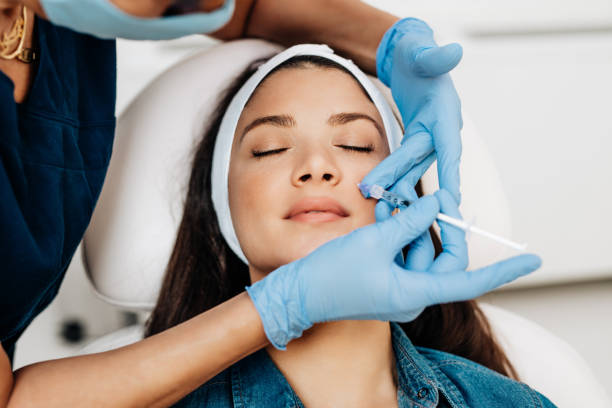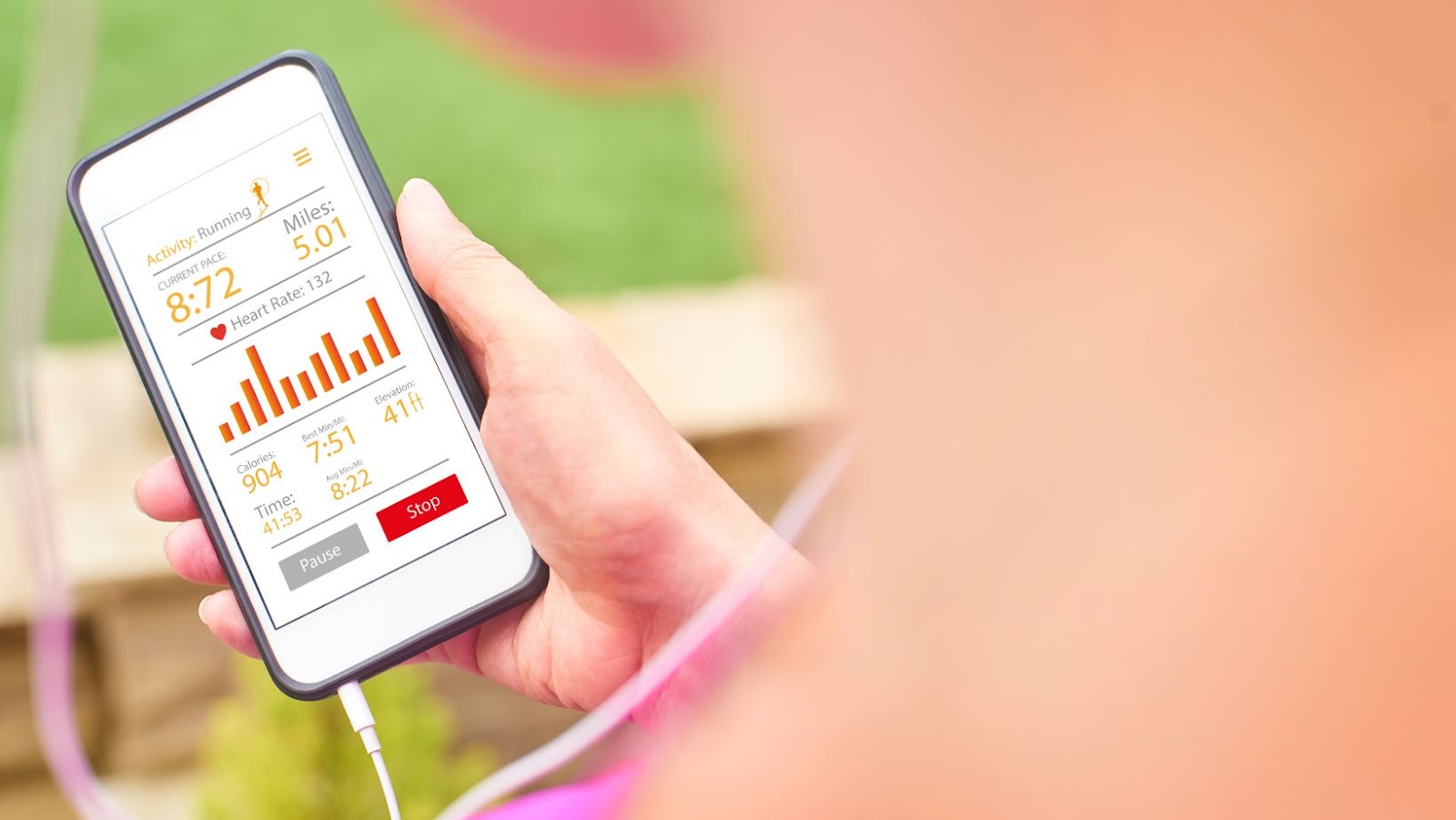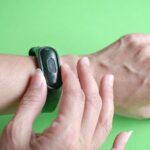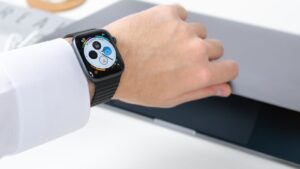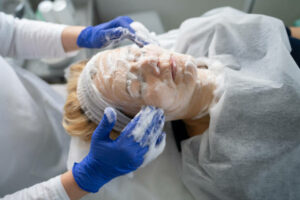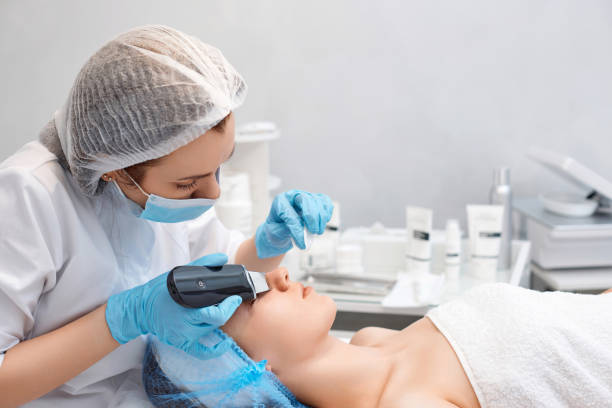
Dermabrasion is a cosmetic procedure that helps to exfoliate the outer layer of the skin, reduce the appearance of fine lines and wrinkles, and improve uneven skin texture. The cost of dermabrasion varies depending on factors such as the extent of the treatment area, the severity of the skin condition, and the expertise of the dermatologist.
Here are some tips to ensure a smooth and speedy recovery after dermabrasion:
- Follow your dermatologist’s post-treatment instructions.
- Keep the treated area clean and moisturized.
- Avoid exposure to the sun and extreme temperatures.
- Use non-irritating skin care products
- Do not pick at scabs or flakes on the treated area as this can cause scarring or infection.
If you experience any unusual symptoms like severe pain or bleeding, contact your dermatologist immediately.
Pro tip: Ask your dermatologist about the estimated cost of dermabrasion before the procedure to avoid any surprises.
Immediate Post-Procedure Care
After having a dermabrasion procedure, it is important to take the necessary steps for proper post-procedure care to have the best outcome. Immediate post-procedure care goes a long way not only in helping speed up the recovery process but also in preventing any complications. This section will discuss the recovery tips that you should follow immediately after your dermabrasion procedure.
Cleanse and Moisturize the Treated Area Properly
Dermabrasion is a skin resurfacing procedure that is used to treat various skin conditions like acne scars and wrinkles. After undergoing the procedure, it is important to properly care for the treated area for optimal healing and recovery.
Here are some tips to follow for immediate post-procedure care:
- Cleanse the treated area gently with a mild cleanser or soap-free face wash.
- Use a soft and clean cloth to pat the skin dry, avoid rubbing.
- Apply ointment or moisturizer recommended by your dermatologist on the treated area to keep it hydrated.
- Avoid sun exposure and wear protective clothing, as your skin will be sensitive and susceptible to sunburn.
- Avoid using harsh skincare products, and do not pick at scabs or peeling skin.
- Follow your dermatologist’s instructions carefully, and report any signs of infection or abnormal side effects immediately.
Pro tip: Dermabrasion is a cosmetic procedure that can cost anywhere from a few thousand dollars to tens of thousands of dollars, depending on the extent of the treatment and the location of the clinic. Be sure to thoroughly research the procedure and the provider before committing to the treatment.
Avoid Sun Exposure and Use Sunscreen as Directed
Dermabrasion is a cosmetic procedure that can be similar to a medical-grade sandpapering of the skin. After the treatment, there are essential postoperative care steps to follow to expedite the recovery process.
One way to protect your skin and prevent post-inflammatory hyperpigmentation after dermabrasion is to avoid sun exposure and use sunscreen as directed. Dermabrasion removes the top layer of the skin, making it more susceptible to sun damage, which can also cause darkening of the skin.
Here are some tips to follow:
- Stay away from direct sunlight and remain indoors as much as possible.
- Wear a hat, scarf or protective clothing to shield the treated area from sunlight.
- Apply sunscreen with an SPF of at least 30 that blocks both UVA and UVB rays.
- Avoid hot water, sweating and strenuous activities for two weeks post-surgery.
- Keep your skin cool and moist by using cold compresses and a gentle moisturizer recommended by your dermatologist.
Using these precautions will not only aid in faster healing but will also ensure the best possible outcome after the procedure.
Take Pain Relievers as Needed and Directed
Dermabrasion is a cosmetic procedure that involves using a specialized tool to gently remove the outer layers of skin, resulting in a smoother and more even complexion. While it is generally safe, it is important to follow proper aftercare instructions to ensure a speedy and comfortable recovery. One essential post-procedure tip is to take pain relievers as needed and directed by your doctor or pharmacist.
Here’s what you need to know about pain relief medication after dermabrasion:
- Your doctor may prescribe you pain relief medication, such as acetaminophen (Tylenol) or ibuprofen (Advil), to take as needed for discomfort.
- Only take the recommended dose and never exceed the recommended dosage or frequency.
- Be aware of any potential side effects or interactions with other medications you may be taking.
- If you experience severe or prolonged pain, contact your doctor immediately.
Following these tips can help you manage your pain and discomfort after dermabrasion, allowing for a quicker and more comfortable recovery.

Long-Term Post-Procedure Care
After having undergone any kind of dermabrasion procedure, long-term care is required in order to ensure maximum benefit and minimize the risk of scarring and other side effects. Therefore, it is important to create a post-procedure care plan and to follow the recommended aftercare plan from your doctor or skincare specialist. This section will cover the various long-term post-procedure care tips and advice that can help to maintain and improve the results of your dermabrasion.
Avoid Picking or Scratching the Treated Area
Dermabrasion is a cosmetic procedure that involves removing the outermost layer of the skin using a specialized tool. The recovery period after this procedure is crucial and can vary depending on the depth of the treatment. Following proper post-procedure care is essential to ensure optimal results.
One vital tip to keep in mind is to avoid picking or scratching the treated area. Post-dermabrasion, the skin is fragile and can be susceptible to damage. Scratching or picking the area can prolong the recovery process and even lead to scarring or infection. Other tips for post-procedure care include: avoiding sun exposure, applying moisturizer regularly, avoiding strenuous activities, taking prescribed medication, and keeping the treated area clean and dry.
It is essential to follow the necessary post-procedure care as prescribed by the dermatologist to ensure maximum recovery. The cost of dermabrasion can vary based on several factors like the extent of the treatment, the area to be treated, and the geographic location. Pro Tip: Consult with your dermatologist to understand the cost and various aspects of dermabrasion thoroughly.
Follow a Strict Skincare Routine to Encourage Healing
Dermabrasion is a cosmetic procedure that uses a rotating tool to remove the top layer of skin, revealing smoother, younger-looking skin underneath. After the procedure, it is crucial to follow a strict skincare routine to encourage healing and prevent complications.
Here are some tips to aid in post-dermabrasion recovery:
- Keep the treated area clean and dry.
- Avoid direct sunlight and wear a broad-spectrum sunscreen with SPF 30 or higher.
- Apply a thin layer of petroleum jelly or a moisturizer recommended by your dermatologist to keep the area hydrated.
- Avoid picking or scratching the treated area, as this can cause infection and scarring.
- Take prescribed medications and attend follow-up appointments with your dermatologist to monitor healing and address any concerns.
Dermabrasion typically costs anywhere from $1000 to $4000, depending on the individual’s skin care needs and the dermatologist’s experience level.
Pro tip: Follow your dermatologist’s instructions carefully for the best possible results and to minimize the risk of complications.
Attend Follow-Up Appointments With Your Provider
Attending follow-up appointments with your dermatologist is an important aspect of long-term post-procedure care after undergoing dermabrasion. Dermabrasion is a cosmetic procedure that utilizes a special tool to exfoliate the outer layer of the skin, revealing a smoother, fresher layer beneath. The recovery process for dermabrasion can vary depending on the individual, but typically includes redness, swelling, and sensitivity in the treated area that may last for several weeks.
By attending follow-up appointments with your dermatologist, you can ensure that your recovery progresses smoothly and address any concerns or complications that may arise. Your provider can monitor your healing progress, offer personalized tips for recovery, and provide recommendations for post-procedure skincare. Additionally, your provider can advise you on how much you can expect to pay for this procedure and what options you may have to finance the treatment.
Pro Tip: Stay in touch with your provider during your recovery period and follow all aftercare instructions carefully to ensure optimal results.
Tips For Relieving Discomfort
Dermabrasion is a skin treatment procedure that has been used to help improve the appearance of scars, wrinkles, and age spots. It’s a popular aesthetic procedure to help you achieve smoother, younger-looking skin. The aftercare process can be uncomfortable and cause some side effects, and the success of the procedure depends on how well the patient follows the recovery process. Let’s discuss some tips to help you relieve discomfort and care for your skin post-dermabrasion.
Apply a Cold Compress or Ice Pack
Dermabrasion is a popular cosmetic procedure that involves removing the top layer of skin to reveal smoother, brighter, and younger-looking skin. Recovery from dermabrasion can be uncomfortable, but applying a cold compress or ice pack can help alleviate post-procedure pain and swelling.
Here are the steps to follow:
– Wrap a cold compress or ice pack in a clean towel or cloth.
– Place the compress or pack on the treated area for 10-15 minutes at a time.
– Take a 15-20 minute break between each application.
– Repeat the process as needed for the first 24-48 hours following the procedure.
– Remember to avoid applying the compress or pack directly on the skin to prevent frostbite or further irritation.
Pro tip: If you experience severe pain, bleeding, or signs of infection after dermabrasion, immediately consult your doctor or dermatologist.
Take a Cool Shower or Bath
Taking a cool shower or bath is a helpful recovery tip after dermabrasion to relieve discomfort and reduce inflammation, especially during the first few days post-treatment.
Here are the key benefits of doing so:
- Cool water can help soothe the skin, relieve pain, and reduce swelling, which are common side effects of dermabrasion.
- It can also help to prevent itching, dryness, and peeling, which may occur as the skin heals.
- Additionally, taking a cool shower or bath can help to cleanse the skin, removing any residual dirt, oil, or dead skin cells, which may have accumulated during the healing process.
Remember not to use hot water or harsh soaps, as these can further irritate the skin and slow down the healing process. Stick to cool or lukewarm water and unscented, gentle skincare products for best results.
Elevate the Affected Area to Reduce Swelling
Dermabrasion is a skin treatment that uses a specialized tool to remove the outer layers of the skin. After the procedure, your skin will be swollen, and you may experience discomfort. Elevating the affected area is an easy and effective way to reduce swelling and promote healing.
Here are some tips to help you relieve discomfort and speed up recovery after dermabrasion:
- Elevate the affected area: Prop up the affected area with pillows to help reduce swelling and promote the flow of lymphatic fluid.
- Apply cold compresses: Use a cold compress, ice pack, or a bag of frozen vegetables to reduce swelling and discomfort.
- Take pain medication: Over-the-counter pain medication such as acetaminophen or ibuprofen can help relieve discomfort.
- Avoid sun exposure: Protect your skin from the sun and avoid prolonged exposure to it.
- Use moisturizer: Apply a mild moisturizer regularly to keep your skin hydrated and prevent dryness.
- Follow the aftercare instructions given by your doctor or dermatologist to help your skin heal properly.
Pro Tip: Dermabrasion can cost between $1000 to $4000 depending on the treatment area and the extent of the procedure. It’s important to consult with your dermatologist to determine if dermabrasion is the right treatment for you and to discuss any concerns you may have about the cost or recovery process.

What To Avoid During Recovery
After you have had a dermabrasion procedure, it is important to follow certain guidelines to ensure a successful recovery. During this time, you should avoid exposing your skin to direct sunlight, strenuous physical activity, and certain skincare products. In this section, we will discuss more specific ways to ensure a smooth dermabrasion recovery process.
Avoid Abrasive Skincare Products or Treatments
Dermabrasion is a skin resurfacing procedure that can improve the appearance of fine lines, wrinkles, acne scars, and other skin imperfections. After undergoing dermabrasion, it is crucial to avoid abrasive skincare products or treatments to help speed up your recovery and achieve optimal results.
What to avoid during recovery:
- Avoid using exfoliating scrubs or other abrasive products that can irritate your skin.
- Restrict your sun exposure and wear protective clothing or a hat when you go outside.
- Do not apply makeup until the recommended time.
- Avoid picking at crusts or scabs that form on the treated area.
- Avoid using hot tubs and saunas as the heat can cause redness and irritation.
By avoiding these practices, you will enhance the healing process and improve your skin’s overall appearance within a shorter time. Pro tip: Consult your dermatologist for recommendations on post-procedure skincare products to use during your recovery to minimize the risk of adverse effects.
Avoid Strenuous Exercise or Heavy Lifting
After undergoing dermabrasion, it is important to avoid strenuous exercise or heavy lifting for at least 2 weeks to ensure proper healing and prevent complications. Strenuous exercise or heavy lifting can increase blood flow to the treated area, leading to swelling and discomfort, and can also cause scarring or keloids to form.
Light exercise such as gentle stretching or walking is permissible after a few days of rest, but avoid activities that cause excessive sweating or irritation to the treated area. It is recommended to follow your doctor’s post-treatment instructions to ensure proper recovery after dermabrasion. Pro tip: Invest in a good quality sunblock to protect the treated area as it heals.
Avoid Smoking or Being Exposed to Secondhand Smoke
To ensure a successful recovery after dermabrasion, it is crucial to avoid smoking or being exposed to secondhand smoke. Smoking causes blood vessels to constrict which results in reduced oxygen and nutrient supply to the skin. As a result, smoking can cause delayed healing, infection, scarring, and other complications. Therefore, it is essential to refrain from smoking for at least two weeks before and after the procedure.
Moreover, secondhand smoke can be equally detrimental to the recovery process. Being around smokers can expose the individual to the same harmful chemicals present in cigarettes. It can also irritate the newly treated skin and cause inflammation, redness, and itchiness. To promote healing and prevent any post-procedure complications, it is important to avoid smoking and being around smokers. Prioritizing your skin’s health is necessary to get the most out of your dermabrasion treatment.
Pro tip: Consider using nicotine replacement therapy, such as patches or gum, to help you quit smoking during the recovery period.
How Much Is Dermabrasion
Dermabrasion is a surgical procedure used to treat skin conditions such as scarring, wrinkles, and acne. It is a relatively safe procedure that involves the use of specialized equipment to sand down the surface layers of skin. It can be a costly procedure, with average costs ranging from several hundred to thousands of dollars depending on the extent of the surgery. But how much exactly does dermabrasion cost? Let’s explore the details.
Factors That Affect the Cost of Dermabrasion
The cost of dermabrasion depends on several factors, including the location of the treatment, the qualifications and expertise of the practitioner, and the severity of the skin condition being treated.
- Location: The cost of dermabrasion can vary depending on the location of the treatment. Dermabrasion treatment in urban or metropolitan areas tends to be more expensive than in rural or suburban areas.
- Practitioner’s Expertise: The expertise and qualifications of the dermatologist or practitioner providing the treatment can also affect the cost of dermabrasion. Highly experienced practitioners may charge more for their services.
- Severity of the Skin Condition: The cost of dermabrasion can also depend on the severity of the skin condition being treated. Treating more severe skin conditions may require more time and treatment sessions, which can make the overall cost higher.
- Recovery Tips: After treatment, it is crucial to protect your skin from sun exposure and avoid using exfoliating products. Use a fragrance-free moisturizer and gentle cleanser to prevent irritation.
Pro Tip: It is important to schedule a consultation with your dermatologist to discuss your skin concerns and determine the best course of treatment for your particular case. This way, you can get an estimate of the cost before treatment.
Average Cost of Dermabrasion
The cost of dermabrasion depends on the extent of the procedure and the location where it’s being performed. On average, the cost can range from $1000 to $4000 per session. It is always better to consult with your dermatologist to get an accurate estimate and an understanding of the total costs involved.
After the procedure, it is important to follow a proper skincare regimen to ensure a speedy recovery. Post-dermabrasion care usually involves gentle washing, moisturizing, and avoiding direct sunlight for some time. Your dermatologist may also prescribe some ointments or creams to help soothe and heal the treated area. It is crucial to follow these recovery tips to avoid any complications and achieve the best results possible.
How to Budget for Dermabrasion Treatment
Dermabrasion treatments are effective in reducing the appearance of scarring, fine lines, and irregular pigmentation. If you’re considering dermabrasion treatment, it’s essential to budget accordingly and prepare for the recovery process ahead of time. The cost of dermabrasion treatment can vary depending on a few factors, such as the severity of your skin concerns, your geographic location, and the expertise of the provider. Generally, the cost can range from $500 to $4,000.
It’s essential to take the time to research different providers and their pricing to determine what may be within your budget. Additionally, it’s crucial to prepare for the recovery period after dermabrasion treatment. This may include avoiding sun exposure, keeping the treated area clean and moisturized, and avoiding any strenuous activity that may cause sweating. By properly budgeting for the cost of dermabrasion treatment and preparing for recovery, you can ensure a successful and beneficial outcome from your treatment.

